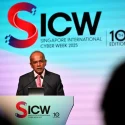SINGAPORE – The Republic is reviewing its action plan to better control the emergence and spread of future drug-resistant superbugs.
The National Strategic Action Plan (NSAP) was launched in 2017 to reduce the antimicrobial resistance rate (AMR) here – meaning the prevalence of drug-resistant infections – through education, surveillance, research, infection prevention and control, and optimisation of antimicrobial use.
Currently, the country’s AMR rate for a number of infections such as the one caused by the drug-resistant E. coli and the Methicillin-resistant Staphylococcus aureus (MRSA) infection is lower than the global rate according to data submitted to the World Health Organisation (WHO).
On Oct 13, WHO had sounded the alarm over
soaring numbers of drug-resistant bacterial infections
, which compromise the effectiveness of life-saving treatments and render minor injuries and common infections potentially deadly.
The United Nations’ health agency warned that one in six laboratory-confirmed bacterial infections worldwide in 2023 showed resistance to antibiotic treatments.
The global rate for E. coli resistance to third-generation cephalosporins – broad-spectrum antibiotics – in bloodstream infections is 44.8 per cent, while in Singapore it is almost half of that at 23.8 per cent.
When it comes to MRSA, its global AMR rate is 27.1 per cent; it is 23.6 per cent in Singapore.
Though the local AMR rate is low and generally stable since 2019, antimicrobial resistance still poses a threat and “we must continue our fight against it,” Associate Professor Teoh Yee Leong, Group Director (Communicable Diseases Collaborations) of the Communicable Diseases Agency (CDA), told The Straits Times.





